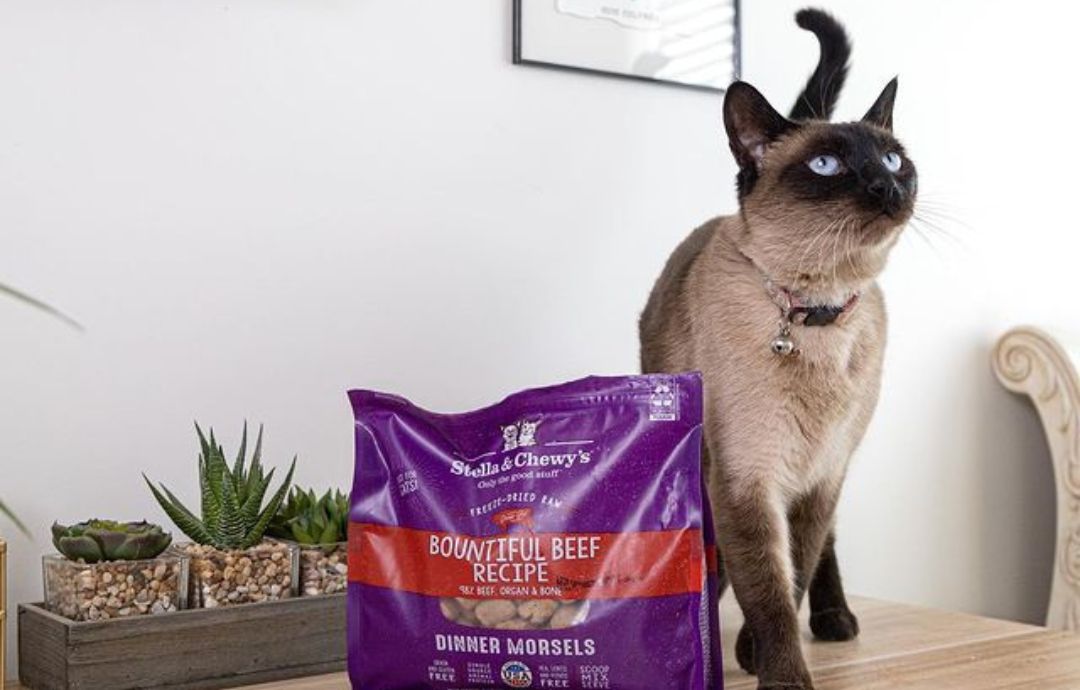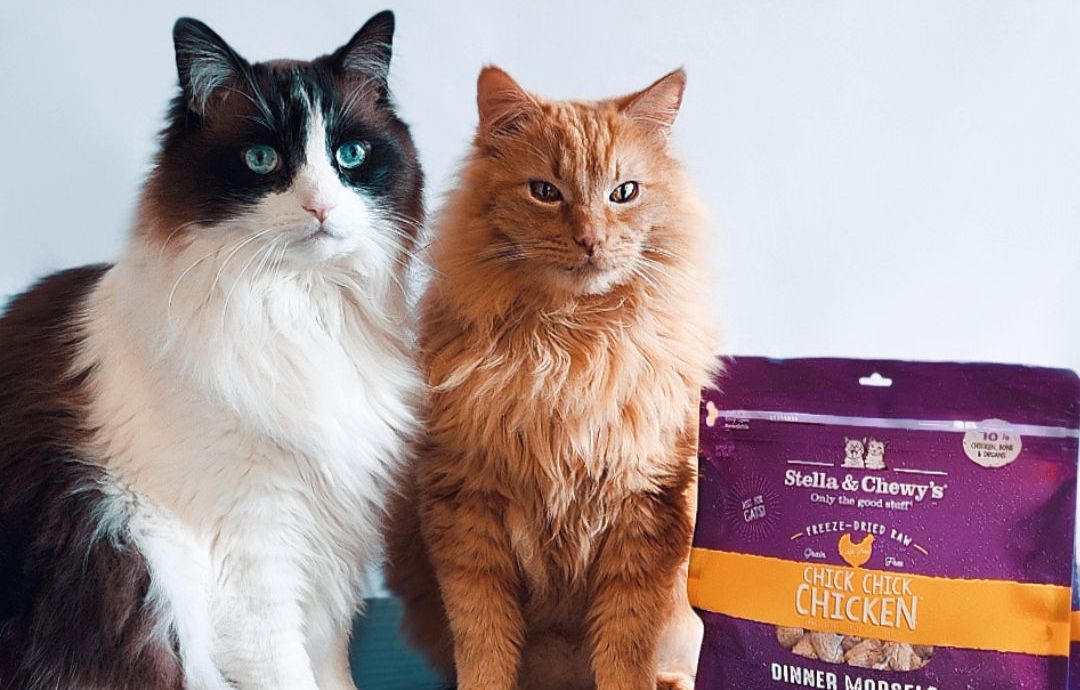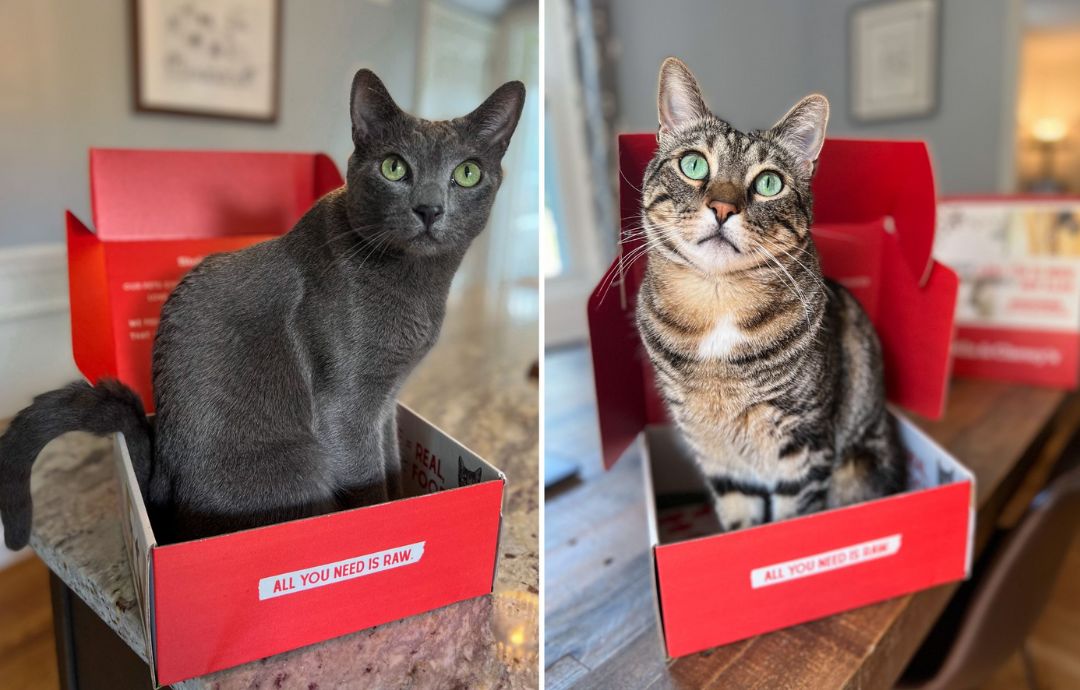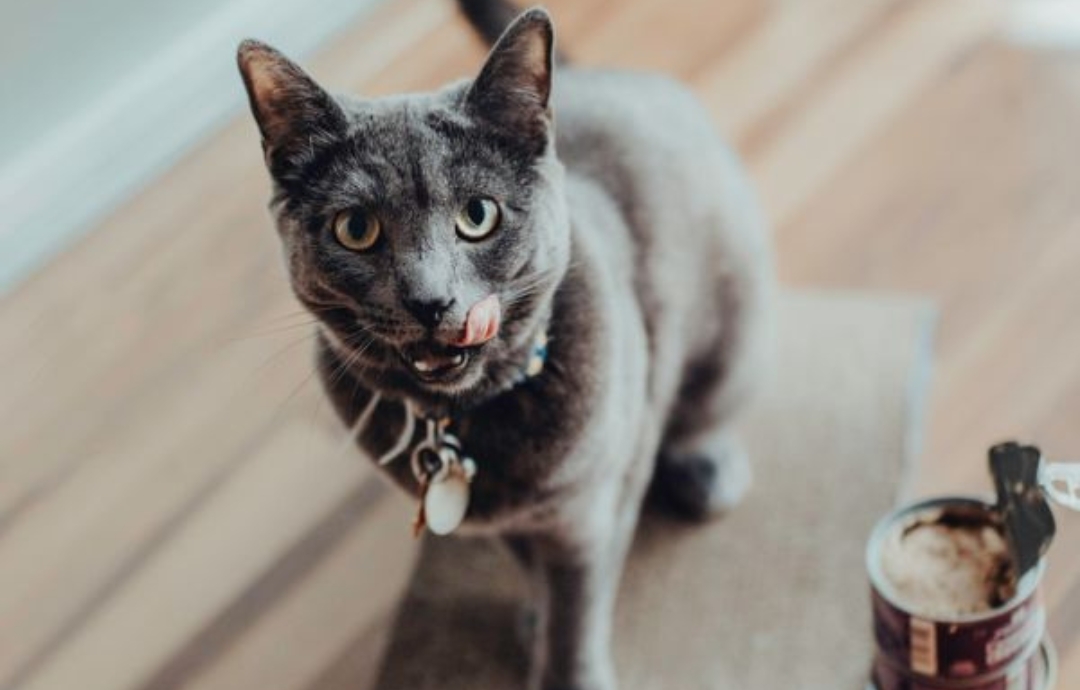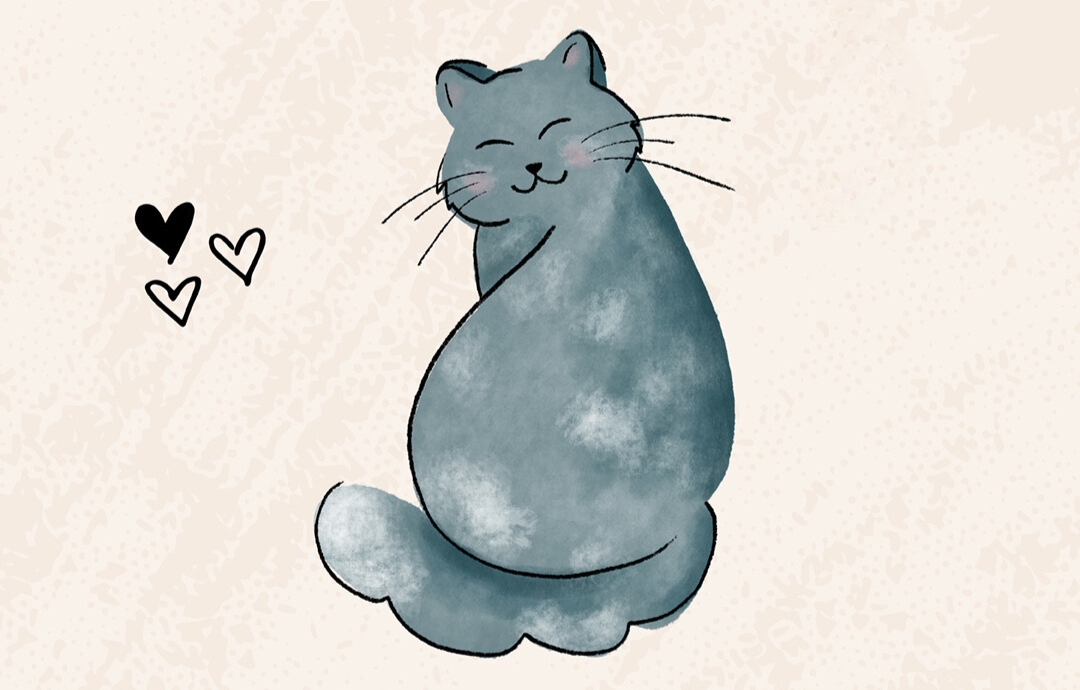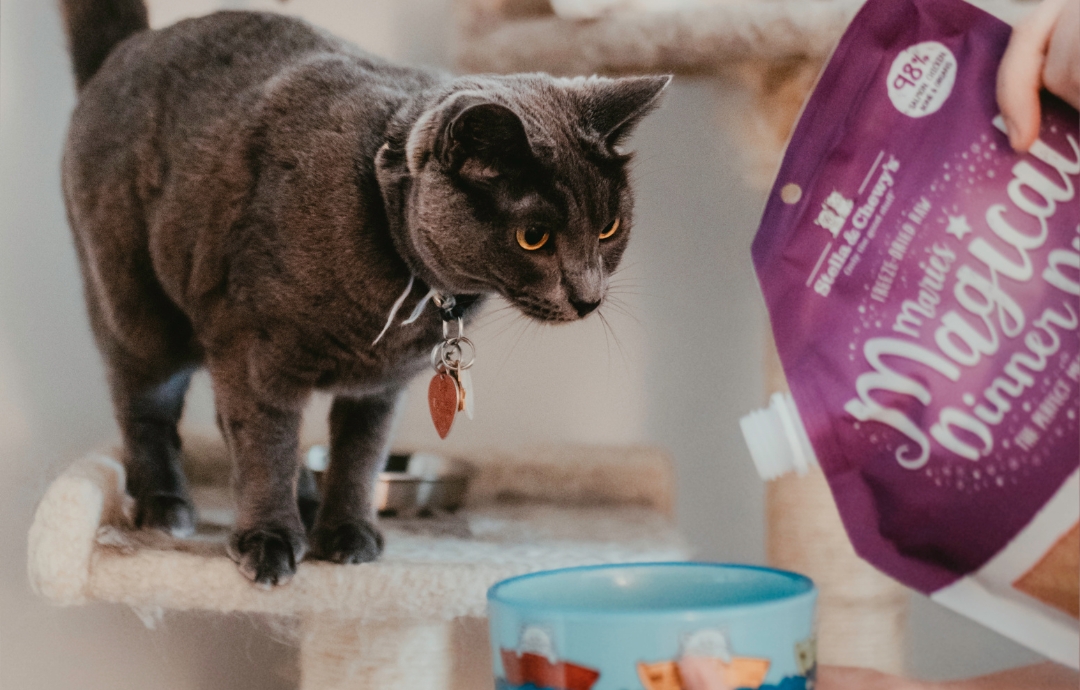
Rotating the proteins in your cat’s diet means periodically changing the primary protein source in their meals. Protein rotation offers several benefits for your cat’s health and well-being, but as always it’s a good idea to check in with your vet before making any changes to your cat’s diet, especially if they have an existing health condition. Fortunately, most cats easily adapt to a change in proteins!
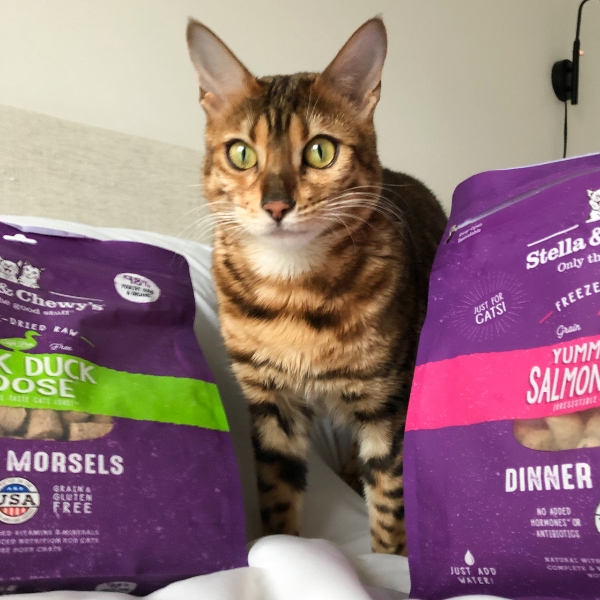
Benefits of Protein Variety
There are so many reasons why offering your cat a wider range of proteins is good for them! Here are just a few:
Prevent boredom & finicky eating habits
Imagine if you ate the same exact thing for every meal, day after day. Even if you loved it at first, you’d probably crave something different before too long! Our cats can’t use words to tell us they’re tired of their regular food, but behaviors such as lack of mealtime excitement, decreased appetite and extreme pickiness can stem from a lack of variety. Of course, if your cat suddenly shows a lack of interest in food, or stops eating or drinking, you should always consult your vet to rule out a possible health issue.
Avoid Food Allergies or Sensitivities
Some cats develop food allergies or sensitivities from overexposure to the same food, and periodic protein rotation reduces this risk.
Nutritional Balance
Different types of protein have different levels of various amino acids and minerals. By rotating proteins you’re helping your cat take in a broader range of nutrients over time for a more balanced diet.
Healthier Gut
A diet with more variety promotes the growth of more types of beneficial bacteria in your cat’s microbiome. Healthy and diverse gut flora support good digestion, nutrient absorption and immune function.
Find Food Preferences
If you only ever feed your cat one type of protein, you may never learn the spectrum of their individual preferences. Knowing which proteins are your cat’s favorites can come in handy in case your cat ever has a decreased appetite due to illness or aging.
Closer to Nature
Your cat’s wild ancestors didn’t eat the same type of animal protein every day. Changing the main protein in your cat’s diet means you’re feeding them a diet that’s closer to their instinctive ancestral ways.
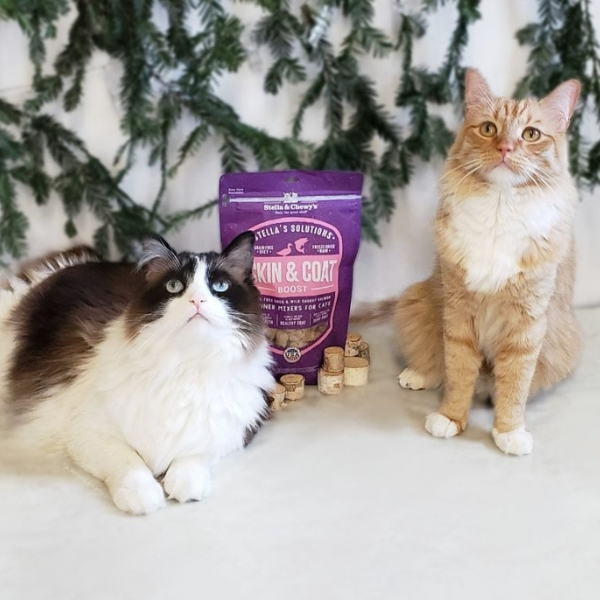
Different Ways to Rotate Proteins
There are two ways to rotate the proteins your cat is eating:
- Stick with the same cat food format (raw, freeze-dried raw, wet, or kibble) & rotate between different recipes
- Feed your cat the same food each day and rotate meal toppers/mixers
Depending on your cat’s personality and preferences, one may work better than the other!
Tips for Starting Your Cat on a Protein Rotation Diet
After getting the green light from your vet, follow these steps to begin rotating the proteins in your cat’s diet:
Make a Schedule
When rotating proteins, there are a few different options you can try:
- Every 2-6 weeks – This is what we recommend if you’re feeding a raw diet.
- Every 3 months – Four times a year can be more manageable.
- As you shop – For this schedule, you use up your current cat food supply and then choose a different type of protein the next time you go shopping. The interval can vary based on how much you buy at once.
Let what’s best for your cat be your guide. If your cat gets bored quickly, you can rotate their protein more frequently. And if you’re giving them a protein they’ve never tried before, give it a trial run before stocking up on it!
Build a Bowl
If rotating the meal topper instead of the main protein, our cat foods and meal toppers can be used to build the perfect bowl for your cat’s tastes. Here are some ideas to get you started:
- Add the benefits of raw to your cat’s kibble or wet food with one of our freeze-dried raw meal mixers or toppers
- Crumble some freeze-dried raw dinner morsels over your cat’s wet or dry food to add an extra helping of nutritious and irresistible raw protein
- Use our Purrfect Paté (made with bone broth) to add moisture and a flavor boost to dry cat food
- Top cat kibble or freeze-dried raw dinner morsels with human-grade wet dinner morsels or moisture-rich Savory Shreds to create a new flavor and texture experience
When adding a topper to your cat’s bowl, make sure to decrease the portion of the main food so the total calories are appropriate for their age, size and activity level.
Watch and Learn
Pay attention when you feed your cat and notice if they seem excited to eat the new protein. It’s also wise to keep a lookout for signs of indigestion such as diarrhea, vomiting or changes in appetite. It’s possible for cats to be allergic or sensitive to a specific animal protein, and that’s something you’ll want to remember. It can be helpful to keep a feeding diary for reference.
Check the Protein Content in Your Cat’s Food
Keep in mind that at minimum, a cat’s diet should consist of 26% protein for adults, and 30% for kittens and pregnant or nursing cats on a dry matter basis (according to AAFCO guidelines). Use our guide to understanding pet food labels to make sure you’re choosing a cat food with adequate protein. If cats don’t eat enough protein they can suffer a range of unwanted consequences in both the short and long term, including low energy levels, muscle loss, skin issues, a dull coat, a weakened immune system, heart problems, vision problems, and more.
Choose High-Quality Cat Food
It’s always important to feed your cat premium cat food formulated to give them complete and balanced nutrition, but it’s especially important when rotating proteins. Make sure the animal proteins you feed your cat are pure, without any added hormones or antibiotics. The animal proteins we use are responsibly sourced and always grass-fed, cage-free, farm-raised, or wild-caught. We’re committed to using safe ingredients that meet our high standards and delivering best-in-class nutrition to allow your cat to thrive! Learn more about our dedication to cat food safety, quality ingredients and sustainability.
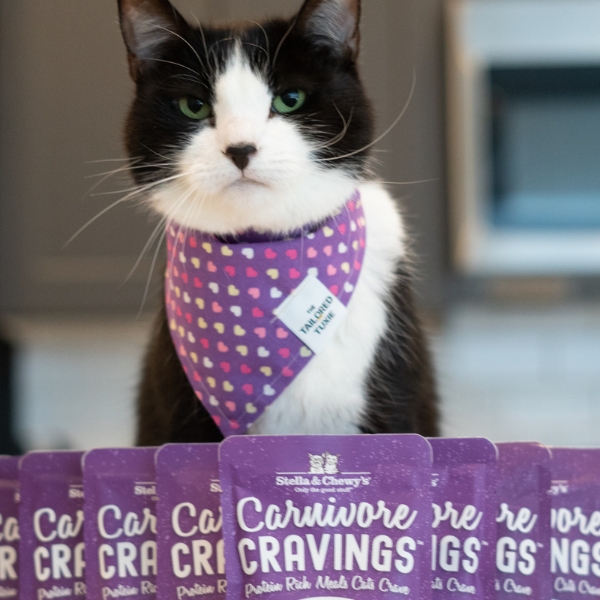
Protein Rotation vs Other Rotational Diets
Other types of rotational diets call for changing the type of food you feed your cat (raw, freeze-dried raw, wet, or kibble). For that type of rotation, it’s important to slowly transition your cat to the new food to give their digestive system time to adjust. However in most cases, cat parents can feed the same type of food and easily rotate between different proteins without transitioning. For more sensitive cats, a brief transition period can be helpful.
Each Cat Is Unique
While protein rotation has many benefits for cats, it’s not the only way to support your cat’s overall health through a healthy diet. If your cat is healthy and happily eats the same meal every day, there’s no problem with that—especially if they seem to balk when offered a different type of protein. Most of our cat food diets offer complete and balanced nutrition for cats of all life stages, so you’ll be feeding them only the good stuff whether you mix up the proteins or keep serving up their favorite. Check out our guide to understanding the different benefits of wet, dry and raw cat foods to take the guesswork out of choosing the right food for your cat!
GET $3 OFF, INSIDER OFFERS, AND HELPFUL PET CARE TIPS.
By entering your information, you are opting in to receive communication from Stella & Chewy's

